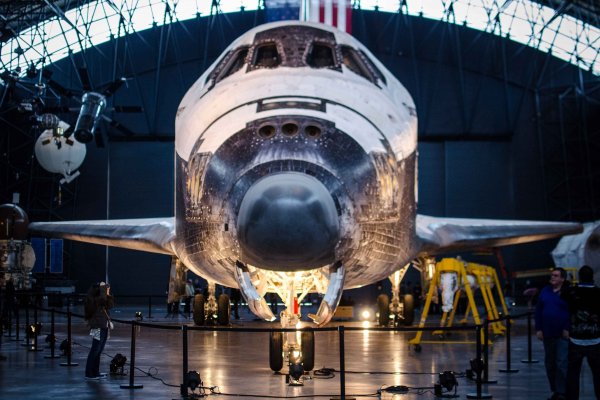Well, thanks to the government (or lack thereof), NASA has been shut down. So what does iFixit do? Talk about how awesome NASA is, of course.

Dropping a tiny screw into the carpet can be a headache when working on a repair. Dropping a screw while working on a repair in space can be deadly.
Of course, most of us have heard of the miraculous repairs to Apollo 13 or the Hubble Space Telescope’s unforgivable mirror blemish. But these repairs, while amazing, aren’t really exceptional. Repair happens in space all the time.
And while every repair has its challenges, in space those challenges are amplified a thousandfold.
When your car breaks down you just take it into a service station, but when the International Space Station (ISS) breaks down, you can’t exactly pull over for a peek under the hood. There are a lot of reasons we should be at least a little impressed with out-of-this-world repair technicians:

1. No gravity
No gravity means a lot of common tools simply don’t work. Finding tools that work in space is often challenging, and sometimes impossible. Tools aren’t the only things affected by gravity. Spacewalking is actually really hard. Astronauts have literally nothing to push off of to move, requiring the use of maneuvering units for motion; not to mention the tethers required to keep them from floating off into oblivion. Working in space is very tiring, so astronauts learn how to move their muscles underwater to simulate a low gravity environment.

2. Specialty tools
Limited range of motion for astronauts due to space suits, extreme temperatures, and the vacuum of space mean that tools need to be designed specially for the task at hand. So what is the workhorse of the astronaut toolbox? A pistol grip tool. This specialty power drill allows astronauts to precisely select the amount of torque and speed needed for the job. Its grip, shaped like that of a pistol (hence the name), is easy to hold onto, even in bulk space-gloves. Oh, and you won’t find a lithium ion battery, like the one in your cellphone, in this tool. It’s got metal hydride batteries to stand up to the extreme temperatures of space.

3. Leave no trace
Repair work in space is really dangerous. A dropped screw or fleck of paint can cause serious damage to spacecraft. These leftovers, called space debris—from rockets, satellites, and collision—pose a major risk for any spacecraft. The debris orbits the Earth, traveling with such velocity that any impact can be deadly. In 1983 a fleck of paint hit Challenger’s front window, leaving a big crater. Currently, there are systems in place to track all debris larger than 5cm, so that spacecraft can avoid it. The ISS even has a special “Whipple” shield to protect against wayward junk.

4. Planning
Unlike a weekend project which you procrastinate on, repairs in space require planning. Due to the danger, NASA often takes months to come up with a safe, practical plan for repair. When an ammonia leak was found in the ISS, astronauts needed to get to work quickly. With just 48 hours of planning, Astronauts Chris Cassidy and Tom Marshburn, spent a grueling five and a half hours outside of the ISS to replace a pump controller box. This is one of the quickest planned spacewalk missions for the ISS.

5. Parts
As showcased by the famed “mailbox” of Apollo 13, parts are not always handy in space. If ever there were to be a MacGyver award, the crew of Apollo 13 would earn it. They created a system using hosing and duct tape to rig CO2 canisters built for the command module to work in the lunar module. Each piece of a spacecraft is uniquely designed, meaning that all replacement parts need to be built to the same specifications and stored on the craft. Every possible scenario must be accounted for, before liftoff.
If an astronaut can repair a space station, you can repair your stuff too! Get inspired by our guides and let your own repair story take off.




0 Commenti